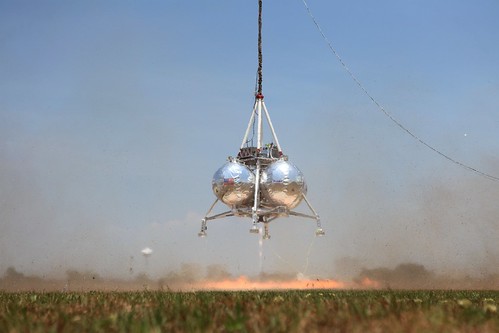 |
| A Morpheus tether test, just after ignition credit: NASA/Joe Bibby |
These two groups along with all the other subsystems have also been busy looking into upgrades for the next version of Morpheus, referred to as Morpheus v1.5. Besides upgrades to existing systems, this also includes the beginning of integration with the ALHAT (Autonomous Landing and Hazard Avoidance Technology) Project, an important step in our development as a lander prototype.
Below is a video summarizing our current progress using tethered tests, which have been invaluable. This team has been able to design, build, and then run 4 hot fire and 5 tethered tests all in less than a year. It shows the advantages of following lean engineering and management practices and these recent delays should not cast any doubt on that. If anything they prove that lean practices still follow the appropriate levels of safety and configuration control allowing us to determine solutions to problems as they happen.
